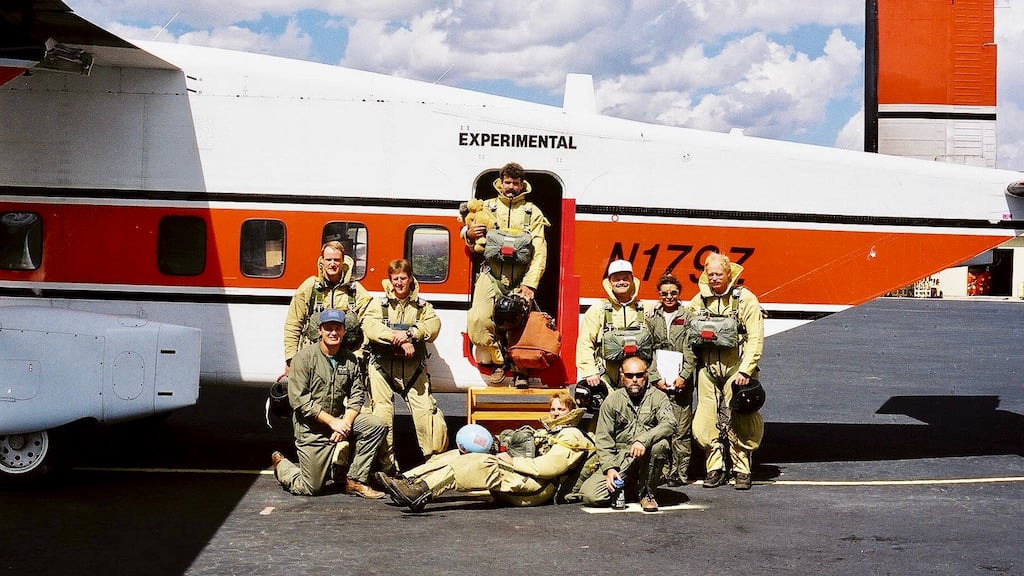Aerial Firefighting Involves Heat, Smoke And Turbulence, Part 3

A Bridger Aerospace Kodiak 100 air attack aircraft.
The escape route in the event of an engine failure is of paramount importance in aerial firefighting since an aircraft with an inoperative engine will have essentially no ability to climb and its maneuvering will also be hindered. There is much to consider for the escape path in case an engine fails.
An unyielding principal is that the escape route must be in a downhill direction. An escape route into rising terrain is simply unacceptable. Another is the ability of the aircraft to safely maneuver through terrain while in an engine-inoperative condition. An escape route down a narrow canyon with tight winding bends isn’t practical. It is important to see the proposed flight path as well as the adjacent terrain, and this is often a difficult set of opposing conditions.
Smoke can obviously obscure the visibility, so the visibility down through the escape route must be sufficient. Flying into the sun, especially with haze or smoke, can drop the effective visibility to zero, making it impossible to see the escape route, obstacles and terrain.
The escape route must be free of obstacles, which run the spectrum from hard-to-detect snags to thin powerlines stretched across canyons. Sun angle, winds, confined maneuvering space, visibility and lack of obstructions are seldom all ideal for the “easiest safest solution” on many of the approach and escape routes.
Wildfire Activity Is Worsening

A couple decades ago the wildfire activity in the western U.S. diminished by late Autumn, giving wildland firefighters a welcome break from the hectic pace of the fire season. Those precious months of recovery for both crews and airframes are now disappearing with the lengthening of the wildfire season.
Higher temperatures, earlier snowmelt, drier conditions, increased fuel availability and lengthening warm seasons are increasing the wildfire risk. Warmer winters have led to increased pest outbreaks and significant tree kills that are also increasing the ferocity of wildfires.
This year’s fire season began in February for some of these air crews when the government of Chile requested aerial support to manage its massive wildfires. Government entities frequently don’t have the resources on their own to deal with massive wildfire outbreaks, as recently illustrated by the wildfire situation in Quebec, thus the sharing of aerial resources is a common practice.
The deployment of assets to Chile is likely a harbinger of future trends and challenges for the aerial firefighting industry. As residents of the U.S. East Coast and north-central states have discovered in recent weeks, the dense smoke caused by wildfires from far away can have large impacts on many facets of human health, safety and business.
The public’s view of aerial firefighting is through the lens of a news camera capturing dramatic footage of a tanker’s retardant drop. Those images simply don’t do justice to the real challenges and sacrifices of this unique branch of aviation. Sadly, in late July news footage captured the final moments of two Greek air force pilots whose Canadair CL-215 water bomber collided with terrain shortly after dropping water on a fire incident. Greece’s Defense Minister Nikos Dendias reminded all that these pilots lost their lives in the line of duty while attempting to protect the lives and property of citizens, as well as the environment. Mother Nature’s exploding wildfires provided no break to the Greek armed forces who observed a three-day mourning period.
These longer and fiercer wildfire seasons are straining the valuable human and aircraft resources for this important mission. Unfortunately, the prognosis predicts worsening conditions in the future, and the losses from fighting wildfires are going to be costly. No one knows this better than the brave souls who fight this relentless threat, both on the ground and in the air.
Aerial Firefighting Involves Heat, Smoke And Turbulence, Part 1: https://aviationweek.com/business-aviation/aircraft-propulsion/aerial-f…
Aerial Firefighting Involves Heat, Smoke And Turbulance, Part 2: https://aviationweek.com/business-aviation/aircraft-propulsion/aerial-f…





